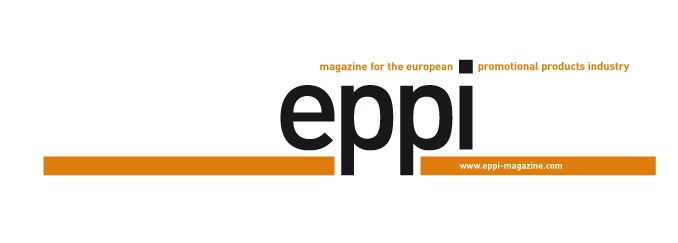A material made from bacteria, suitable for a wide range of applications that is additionally fully biodegradable and compostable: Something that sounds like a fairy-tale, could revolutionise the plastic industry. Polyhydroxyalkanoates, PHA for short, not only offer huge advantages compared to conventional, oil-based polymers, but also compared to so-called “bio plastics”. There are already numerous examples of products manufactured from PHA today – also in the promotional products industry. Rick Passenier, co-founder and board member of the organisation GO!PHA, explained what is needed to ensure the material is used more widely than hitherto.
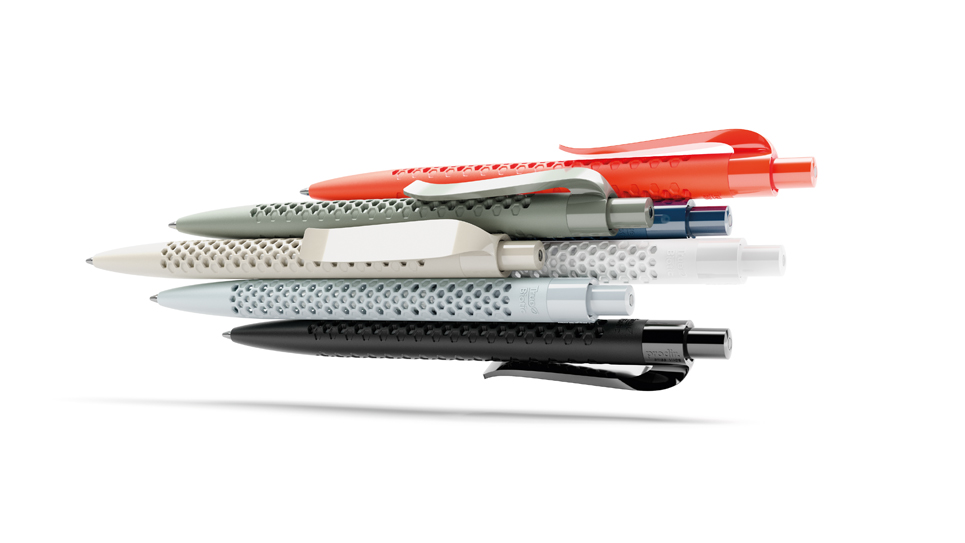
Mr. Passenier, you have uploaded detailed scientific information about PHA on your website, as is appropriate for serious lobby work. But for the laymen among us, what is PHA?
Rick Passenier: It is indeed sometimes complicated to talk about PHA without going into scientific detail. Which is why we are currently working on a communication and PR programme that intends to make our information and data more compatible and more accessible for the public. In their natural form, polyhydroxyalkanoates – PHA for short – are polymers that are found everywhere in nature, namely as a product that is produced by certain bacteria. Incidentally, such bacteria and thus also PHA have existed on this planet much, much longer than human life. There are many different types of PHA producing bacteria, which feed on substances that are rich in carbon. With the right conditions, the bacteria carry out a biosynthesis process and produce PHA in their bodies as a storage product – as an energy storage for rainy days so-to-say – which remains inside the bacteria. One can make use of the biochemical process by feeding large volumes of suitable bacteria with food that is rich in carbon and subsequently extract the PHA from them.
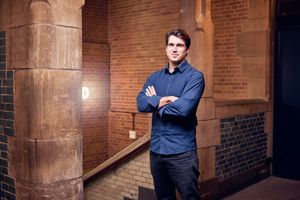
Rick Passenier
How can we picture the industrial process of PHA production?
Rick Passenier: There are different methods, all of which entail certain bacteria, which produce the substances of the PHA material group. There is not just “one” PHA, but – similar to synthetic polymers – many different ones with diverse characteristics. Depending on the bacteria and also the substances they are fed with, different types of PHA are created that are suitable for various applications. “Plastic” in itself is a family of polymers and PHA is a natural equivalent, different materials and functionalities of which can be obtained using different production methods and initial scenarios.
So, for example, I can influence the characteristics of the finished PHA plastic depending on the selection of bacteria and “food”?
Rick Passenier: In principle, yes. There are for instance bacteria that produce more complex materials if they are fed more complex substances – explained in a simplified manner.
In the meantime, many companies produce PHA on a commercial basis – several dozens of them are also members of GO!PHA. How does this work? Are there huge tanks that are regularly “harvested”?
Rick Passenier: Exactly – and at the core biological microfactories, the bacteria, are at work. There are organisms everywhere in nature that produce PHA. The trick about it is finding the right ones and making them manufacture a substance with specific characteristics, because the set-up of the microfactory is continually adapted and optimised. For example, by selecting a certain type of food that can comprise of plant oil, used cooking oil or even food leftovers. Ultimately, a natural production system is imitated and converted into a standardised, industrial system. As soon as the bacteria has produced large volumes of PHA, the cell structure is disrupted and the PHA extracted and further processed.
Where is the bacteria sourced?
Rick Passenier: One already knows that there are natural environments that produce the corresponding species. For instance, one of our member companies collects bacteria for its factory from the French coast. But the sources are by no means exhausted.
What sort of volumes are we talking about?
Rick Passenier: The PHA industry as a whole is still in the foundation period. In comparison to the overall plastic industry it is extremely small, but it is growing fast and one is expecting the growth to accelerate further over the coming years. Large suppliers can currently produce around 5 kilotons a year, whereby there are plans to upscale the production to 20 or even 50 kilotons in the near future.
What are the advantages of PHA in comparison to other natural polymers, which are maize or sugar cane-based, for example?
Rick Passenier: Two significant criteria are used to differentiate and assess plastics that were not synthetized from crude oil: bio-based – that refers to the raw material – and biodegradable – this refers to the disposal. The great thing about PHA is the fact that the raw material displays an extremely high degree of versatility regarding both criteria. PHA can be produced using almost all foods rich in carbon, which can be implemented economically and efficiently to an industrial degree. That can even be CO2, natural gas, used cooking oil or organic waste. PHA is also more versatile than any other organic plastic in terms of endof- life options: It can be recycled mechanically or chemically, it is completely compostable and what’s more unlike many other biodegradable plastics, not only under specific industrial conditions, but instead even on the domestic compost heap, naturally or on conventional landfills. Beyond this, PHA also fully decomposes in fresh or salt water without leaving any harmful residues behind. Hence, the material fits in perfectly with sustainability concepts that include the entire life cycle of products.
Does PHA have any disadvantages compared to oil-based polymers that could hinder them from being implemented largescale?
Rick Passenier: Oil-based plastics have the advantage that they have been researched and developed for decades, which is why there are of course in the meantime thousands of materials that work superbly: PHA is still an infant, whereas conventional plastics are adult, mature and educated people. One has to invest a great deal of time and money to turn the infant into an adult, who is dependent, can walk on its own and is aware of its function and responsibility in society. We are confident that almost everything in the plastic segment is possible with PHA – we are for instance presently researching into PHAbased textiles, but overall the developments are in the early stages. Pioneers with financial and industrial influence are needed to push the progress forward. Of course, like everywhere else it is also about costs. Compared to other plastics PHA is still between 150 and 200% more expensive. The more that is produced, the higher the degree of automation and the higher the manufacturers’ capacities are, the more competitive the prices will become. A strong downward price development is already noticeable now.
Does anything have to be observed when storing the raw material?
Rick Passenier: No, not really. Compost conditions shouldn’t prevail, the granules should be stored cool and dry, but that is normally the case anyway.
Depending on the finished product there are many different manufacturing methods – injection moulding, centrifugal casting, extrusion, etc. Furthermore, plastics often contain additives such as plasticizers so that they can fulfil their specific task expediently. How can PHA plastics be adapted to suit the different purposes without limiting their ecological advantages?
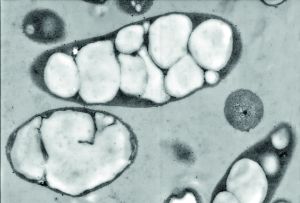
The PHA depot formed from bacteria is easily recognisable on these microscope images of cells rich in PHA (72x magnification).
Rick Passenier: This is where the wide spectrum of different types of PHA and the complex interplay between bacteria, foodstuffs and processing methods come into play. One of the first PHA plastics that was successfully produced was for instance PHB, which was very brittle and thus not suitable for many applications. Next to advancements on this material, also other PHA types were developed, such as PHBH, which has less issues with this brittleness.. PHA can be modified and continually adapted just like other polymers. Of course, one still always needs additives, colourants alone – here the task at hand lies in selecting natural alternatives. As is the case with other plastics, together with their raw material suppliers the producers have to find the suitable material for their production methods.
In which product areas can PHA already be well-implemented and where is it already utilised more frequently?
Rick Passenier: There are already a lot of great products, the spectrum ranges from products of practical use such as writing instruments, cups or accessories, through to a wide array of packaging or special applications – like sun blockers in creams. Because PHA is of a natural origin, many people only focus on the easy disposal aspect, here we are striving to expand the focus. Many products made from PHA – for instance household items – can namely be utilised for many years. But of course many areas of application are especially suitable because PHA breaks down so well – here compostable shopping bags or coffee capsules spring to mind. These are items that are already frequently made from PHA. PHA has been implemented in the medical segment for some time already too, for instance for surgical yarns that disintegrate after a certain amount of time.
A writing utensil was developed together with the Swiss writing instrument manufacturer, Prodir, the barrel of which is made from 100% PHA – the QS 40 TrueBiotic. How did this cooperation come about?
Rick Passenier: One of our mutual partners – an Italian plastic compounder that produces among other things PHA compounds – brought us together because Prodir wanted to become a member of GO!PHA. We then discussed what we could do for each other, inter alia it was about Prodir producing a writing instrument for us that we can use for our marketing purposes. We now also implement the QS 40 TrueBiotic as a promotional product and I always carry it with me because haptic items are a fantastic way of conveying abstract contents and literally making the advantages of PHA tangible.
And of course products made from PHA make excellent marketing tools, because they convey ecological commitment and awareness in a very striking manner – they can be used to tell wonderful stories.
Rick Passenier: Absolutely. This also applies for us as an organisation that has set itself the task of carrying out lobby work for PHA. This is why we are always on the look-out for case studies and are grateful for all products that we can use to demonstrate the diversity and advantages of our material in a concrete way.
I am sure there will be even more promotional products manufacturers who would like to implement PHA in the future at least for part of the product line-ups. How would you advise these companies to proceed?
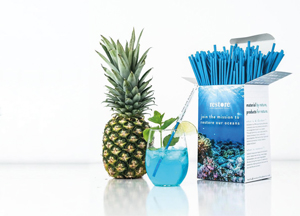
The advantage of PHA compared to conventional plastics: The material dissolves completely both in fresh and in salt water without leaving a trace and is thus an ecologically practical alternative to disposable items made of plastic.
Rick Passenier: The initial question is always the same: Which demands should the finished product fulfil? Based on this one can look for a suitable PHA supplier. Testing is the next stage and where necessary further developments and adaptions.
GO!PHA has set itself the task of “accelerating the development, commercialisation, and adoption of natural, biodegradable and sustainable PHA polymers globally.” What has to be done so that the plastic industry switches over to the eco-friendly material large-scale?
Rick Passenier: PHA is on the right track and can further develop just like conventional plastics. However, it will take time and high investments for it to reach the same level. The individual players along the value chains – raw materials producers, manufacturers, distributors – must be willing to engage in a process that demands a lot of time and financial means. Strong leaders with good reputations, a widereaching external impact and market power play a major role here. The more developments are pushed forward and the more products successfully introduced onto the market, the more companies will follow the example of individual pioneers and the more readily we can prove PHA’s potential to the world.
Are there any big players that are currently experimenting with PHA, who could achieve further breakthroughs and accelerate the snowball effect?
Rick Passenier: Definitely – there are several large companies within our network, who are highly motivated and want to be involved in a revolution and who are intensively testing production processes with PHA in different product areas. Some of them are really inpatient. The process is the same with all other innovation and scaling processes: As soon as all of the challenges encountered in the production have been mastered, it comes down to determining the right production volumes and adapting the entire value change step by step. In global terms something like this doesn’t work from one day to the next, but the right impulses are there. Personally I think that PHA has a fantastic future ahead of it. There are so many natural materials that are just waiting to be researched and successfully implemented as ecological alternatives.
// Till Barth spoke with Rick Passenier.
Photos: Dr. Elisabeth Ingolic, FELMI/ZFE, TU Graz (2); GO!PHA (2); Pagani Pens (1)




